Refine search
Actions for selected content:
152 results

2 Peter
-
- Published online:
- 31 October 2025
- Print publication:
- 20 November 2025
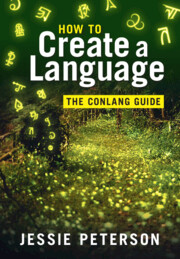
How to Create a Language
- The Conlang Guide
-
- Published online:
- 23 October 2025
- Print publication:
- 02 October 2025
-
- Textbook
- Export citation
1 - Natlangs
- from Part I - Building Words
-
- Book:
- How to Create a Language
- Published online:
- 23 October 2025
- Print publication:
- 02 October 2025, pp 3-20
-
- Chapter
- Export citation
2 - Cognitive Foundations and Cultural Models
- from Part I - Theoretical Foundations
-
-
- Book:
- The Cambridge Handbook of Psychological Anthropology
- Published online:
- 22 October 2025
- Print publication:
- 25 September 2025, pp 37-61
-
- Chapter
- Export citation
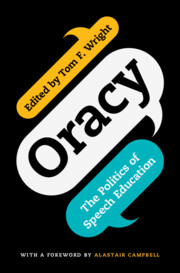
Oracy
- The Politics of Speech Education
-
- Published online:
- 23 September 2025
- Print publication:
- 31 July 2025
Introduction
-
-
- Book:
- Oracy
- Published online:
- 23 September 2025
- Print publication:
- 31 July 2025, pp 1-18
-
- Chapter
-
- You have access
- HTML
- Export citation
13 - The Trouble with Oracy?
- from Part III - Oracy in History and in Theory
-
-
- Book:
- Oracy
- Published online:
- 23 September 2025
- Print publication:
- 31 July 2025, pp 188-200
-
- Chapter
- Export citation
3 - Sociolinguistic Aspects of Children’s Welsh
- from Part I - The Socio-educational Context
-
-
- Book:
- The Acquisition of Celtic Languages
- Published online:
- 03 July 2025
- Print publication:
- 10 July 2025, pp 47-66
-
- Chapter
- Export citation
34 - Legal Ambiguities
- from Part III - Applications
-
-
- Book:
- The Cambridge Handbook of Experimental Jurisprudence
- Published online:
- 17 May 2025
- Print publication:
- 05 June 2025, pp 578-609
-
- Chapter
- Export citation
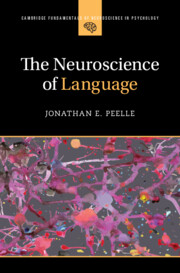
The Neuroscience of Language
-
- Published online:
- 17 April 2025
- Print publication:
- 10 April 2025
-
- Textbook
- Export citation
Chapter One - Introduction: Transferring Ideas from One Brain to Another
-
- Book:
- The Neuroscience of Language
- Published online:
- 17 April 2025
- Print publication:
- 10 April 2025, pp 1-15
-
- Chapter
- Export citation
1 - Introduction
-
- Book:
- Language, Image, Gesture
- Published online:
- 08 January 2025
- Print publication:
- 13 February 2025, pp 1-27
-
- Chapter
- Export citation
Navigating Lingala: Linguistic Change, Political Power, and Everyday Authoritarianism in Congo-Zaire, 1965–97
-
- Journal:
- The Journal of African History / Volume 65 / Issue 3 / November 2024
- Published online by Cambridge University Press:
- 12 February 2025, pp. 327-343
-
- Article
-
- You have access
- Open access
- HTML
- Export citation
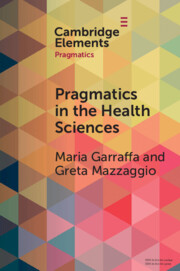
Pragmatics in the Health Sciences
-
- Published online:
- 06 February 2025
- Print publication:
- 06 February 2025
-
- Element
- Export citation
7 - Corpus Linguistics and the Cognitive/Constructional Endeavor
- from Part II - Methodological and Empirical Foundations of Constructional Research
-
-
- Book:
- The Cambridge Handbook of Construction Grammar
- Published online:
- 30 January 2025
- Print publication:
- 06 February 2025, pp 171-195
-
- Chapter
- Export citation
Chapter Nine - A Synthetic View of the Peopling of the Caucasus
-
- Book:
- The Peopling of the Caucasus
- Published online:
- 21 January 2025
- Print publication:
- 23 January 2025, pp 202-208
-
- Chapter
- Export citation
Chapter Ten - Further Research into the Peopling of the Caucasus
-
- Book:
- The Peopling of the Caucasus
- Published online:
- 21 January 2025
- Print publication:
- 23 January 2025, pp 209-216
-
- Chapter
- Export citation
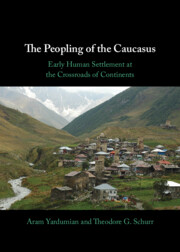
The Peopling of the Caucasus
- Early Human Settlement at the Crossroads of Continents
-
- Published online:
- 21 January 2025
- Print publication:
- 23 January 2025
8 - Stylistics
-
- Book:
- Stylistics
- Published online:
- 18 February 2025
- Print publication:
- 09 January 2025, pp 263-278
-
- Chapter
- Export citation
5 - Concision
-
- Book:
- Writing for the Reader's Brain
- Published online:
- 12 December 2024
- Print publication:
- 12 December 2024, pp 138-165
-
- Chapter
- Export citation
